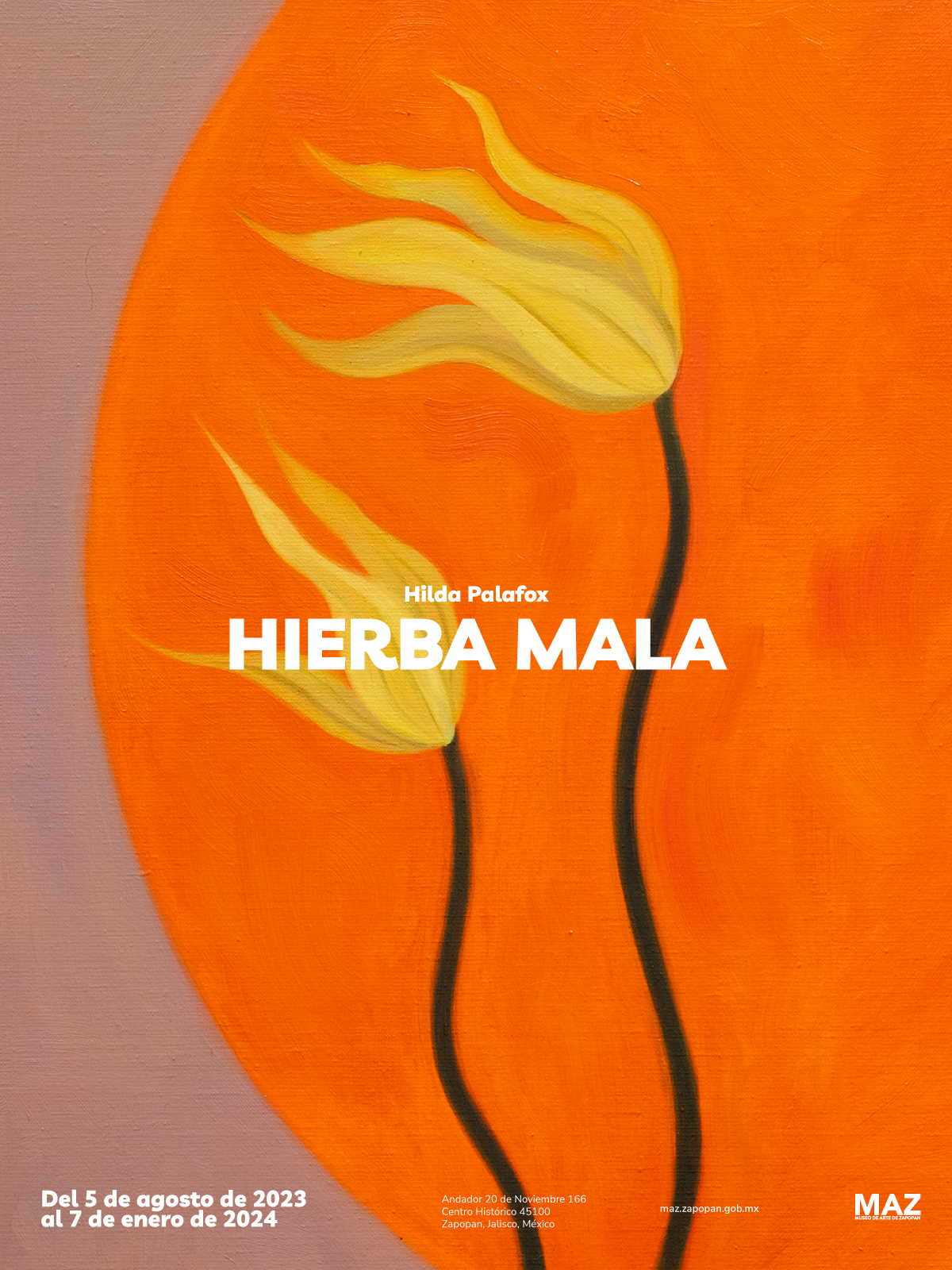Wildflower — Hilda Palafox
From 5 August 2023 to 7 January 2024
The history of muralism is marked by a serious absence of women artists. It may be that we continue to perpetuate the notion of an exclusively masculine discipline, rendering ourselves complicit with the typically machista conduct of the principal figures of the movement.
This brings us to the work of Hilda Palafox. Her murals, paintings, and sculptures fascinate us because, in spite of our familiarity with the figures and motifs of the muralist iconography, we realize that, in fact, there is no correspondence. Looking more closely, we understand that bodies escape the feminine/masculine dialectic. Within the space of representation, bodies free themselves not only of biological, but above all of social determinism, deciding thereby to establish a maternal relationship with friendship, a maternal approach to poetry and words, by means of images. A sort of ivy vine that grows and spreads as far as desire pushes it, thwarting the limits, the frames, the fences that surround it.
Hierba mala (literally, ‘bad grass’), trepadora (‘creeper’), maleza (‘weed,’ but containing an element of ‘badness’ or ‘evil’), mala mujer (‘bad woman’), and even mala madre (‘bad mother’) are just some of the terms given in Spanish to these plants that reproduce in adverse conditions, that brave the elements, that sting the hands of those trying to pick and clear them out, and that leave their offspring proliferating all around.
Through the strength and robustness of her figures ―forces of nature that nothing can contain―, Hilda Palafox tames the pictorial space and invites us to look at it from another angle, where maternal impulses, for example, have nothing to do with gender and everything to do with the ties of love* and the possibility of creating.
Viviana Kuri
* There is a whole world in our gaze: the plant called mala madre in Spanish is also known as lazo de amor (‘love-knot’).
